SANDS SPACE HISTORY CENTER
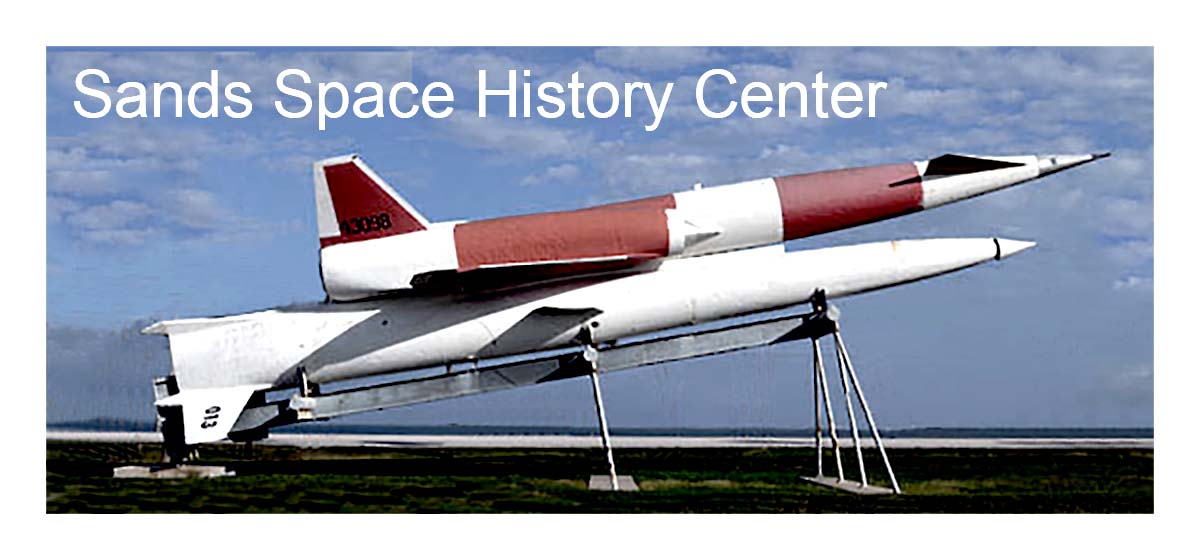
North American Navaho: Surface-to-Surface long-range intercontinental guided missile. This missile was envisioned in 1947 as a pilotless bomber capable of carrying a weapons payload a distance of 5,500 miles.
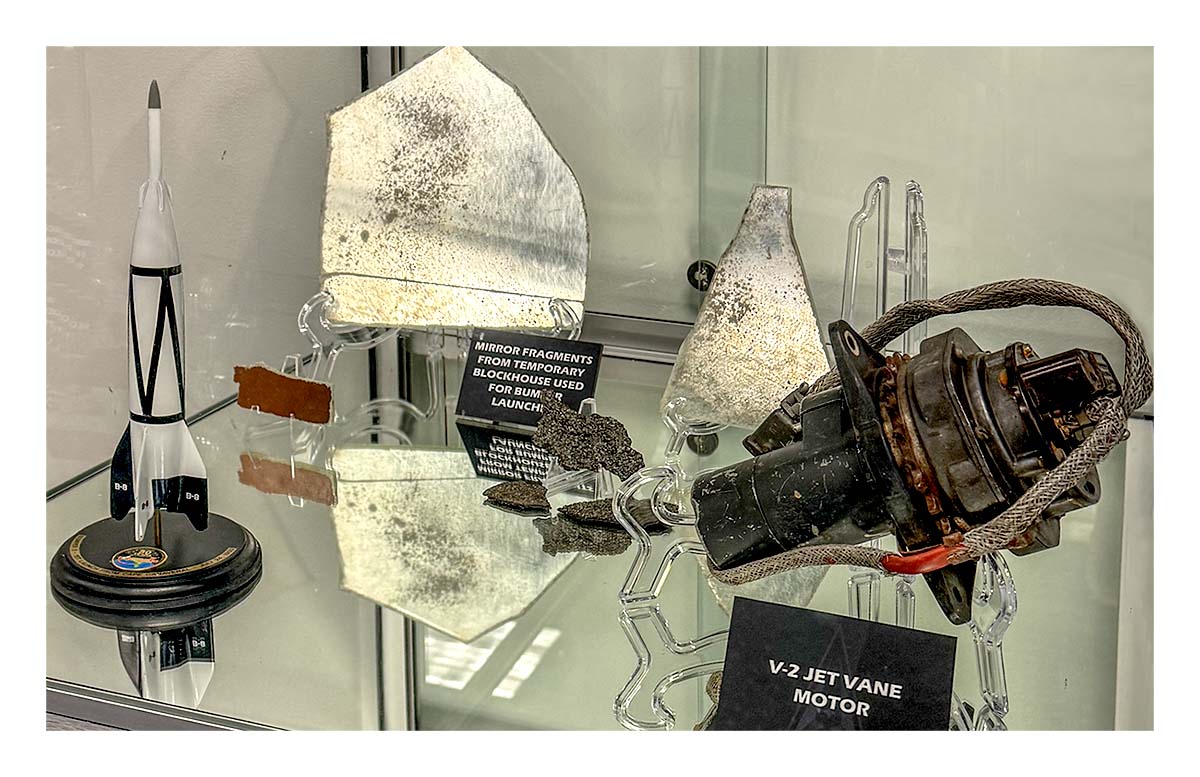
V-2 Jet Vane Motor: Unlike modern rocket engines, the V-2's rocket engine was mounted in a fixed position and not used for steering. Four carbon airfoils or jet vanes placed directly in the engine exhaust path accomplished this task. The Redstonerocket used this technology.
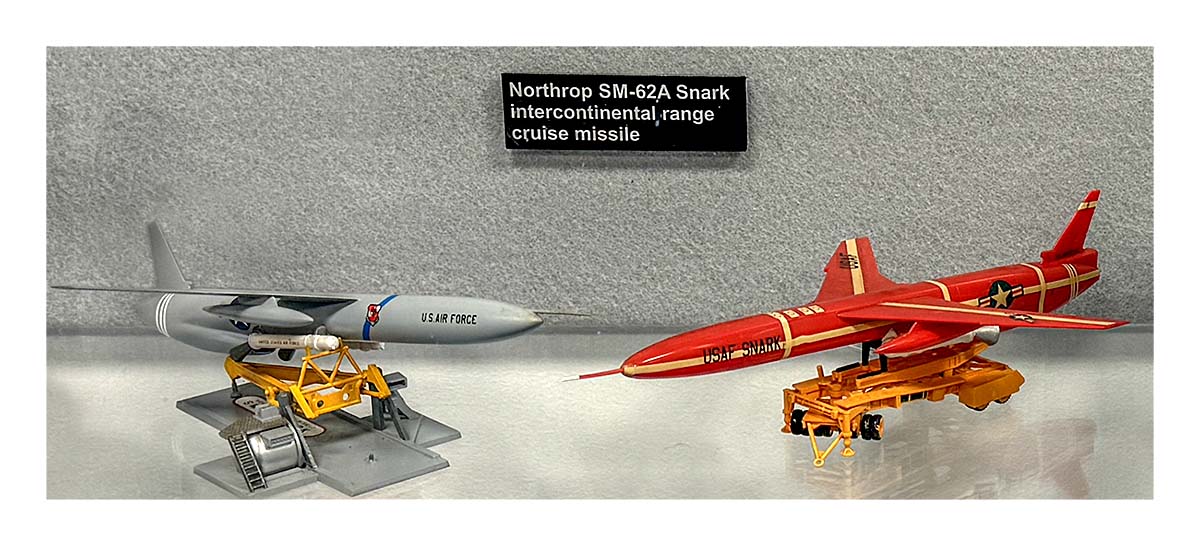
Two models of the Northrop SM 62 Snark, an Intercontinental range ground-launched cruise missile that could carry a W39 thermonuclear warhead.
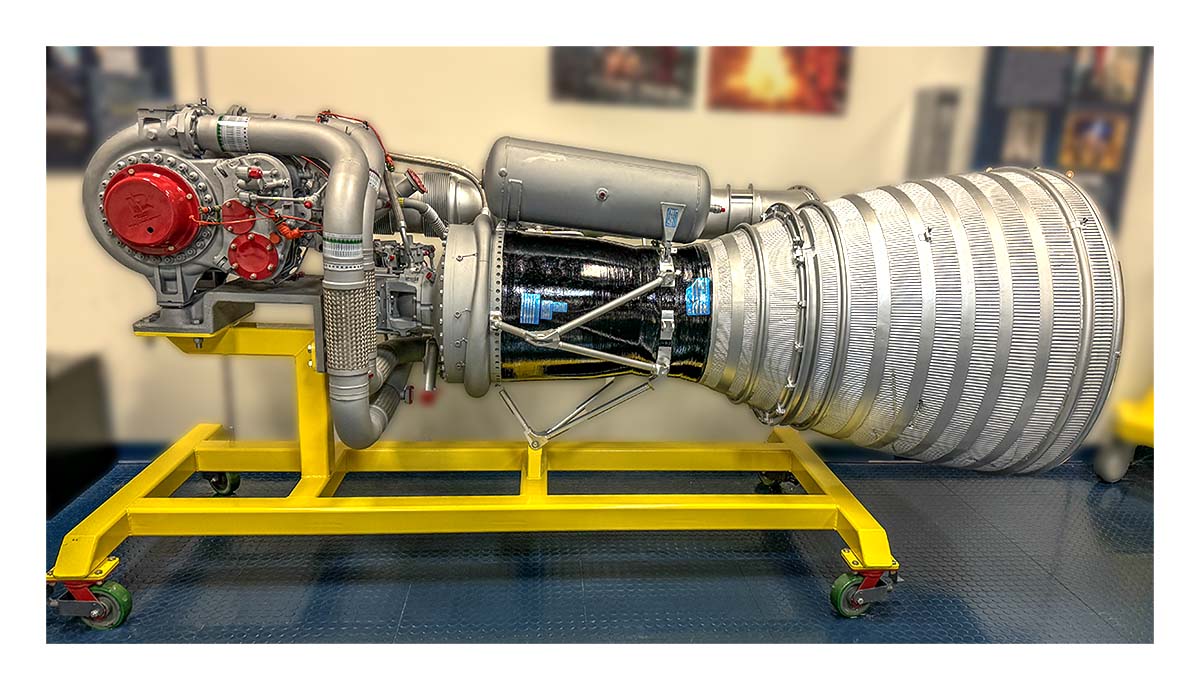
Atlas Booster Engine: Built by Rocketdyne, two of these (outboard) engines were installed to propel the Atlas missile at launch. The thrust of the booster was a mere 165,000 pounds.
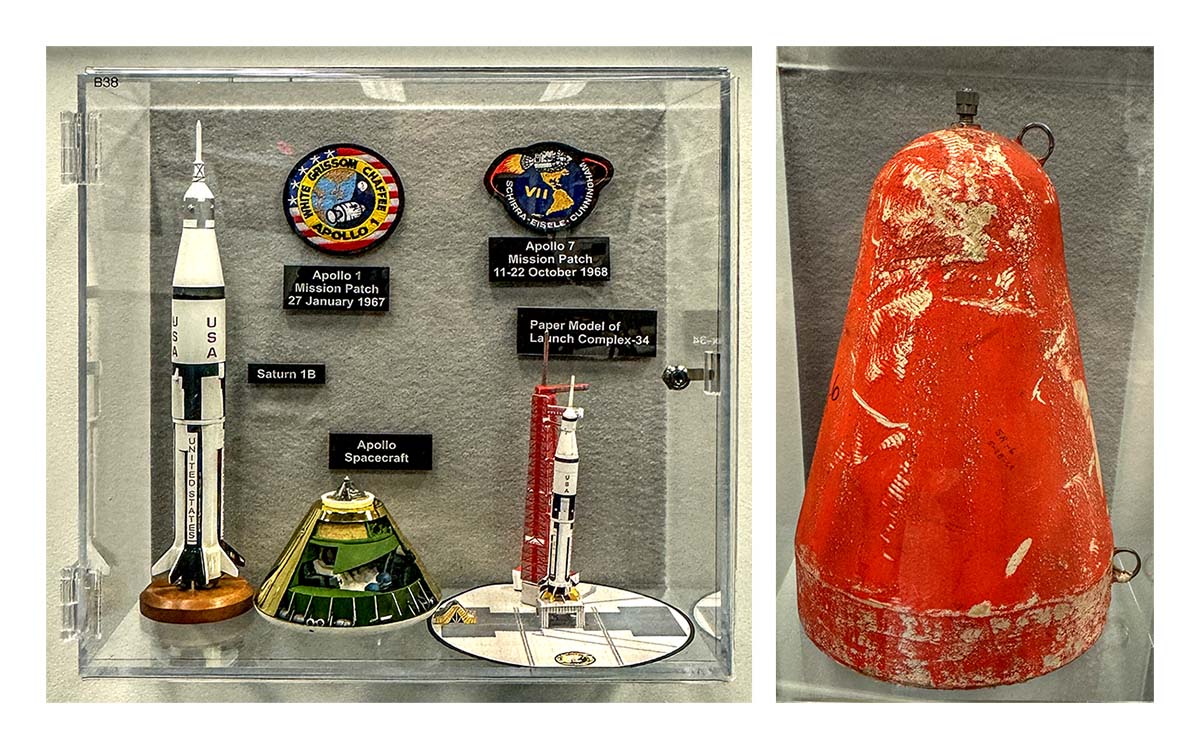
Right: Q-Ball Cover: A series of pitot tubes (called the Q-Ball) on the tip of the Launch Escape System was critical to measuring dynamic flight pressures during atmospheric flight of the Apollo vehicle. A simple fiberglass and Styrofoam cover, called the Q-Ball Cover, was devised to keep the tubes clear of dust and debris before launch. Prior to launch, the Q-Ball Cover was quickly lifted from its perch by a series of weights and lanyards attached to the umbilical tower. Description from the Space Force Museum website.
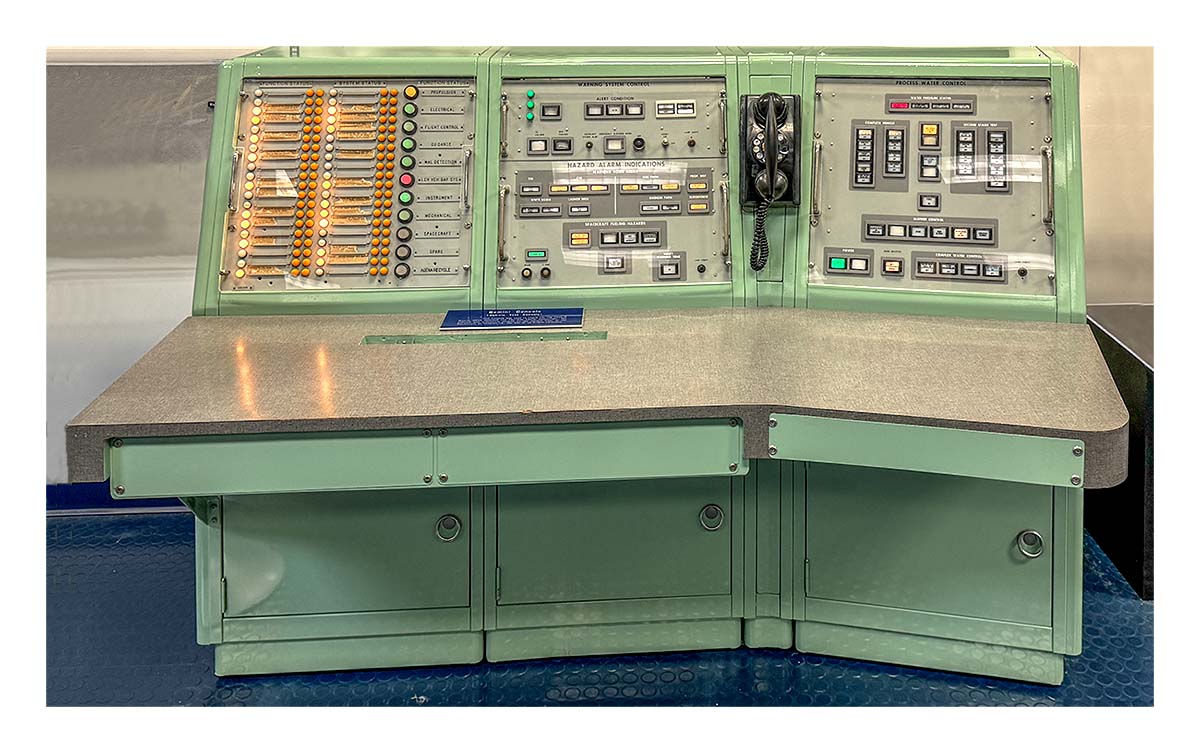
Gemini Vehicle Test Console: Installed on the second floor of Launch Complex (LC) 19 blockhouse, this original and historic piece of equipment was used to check out the Titan II missile used as a booster for the Gemini spacecraft.
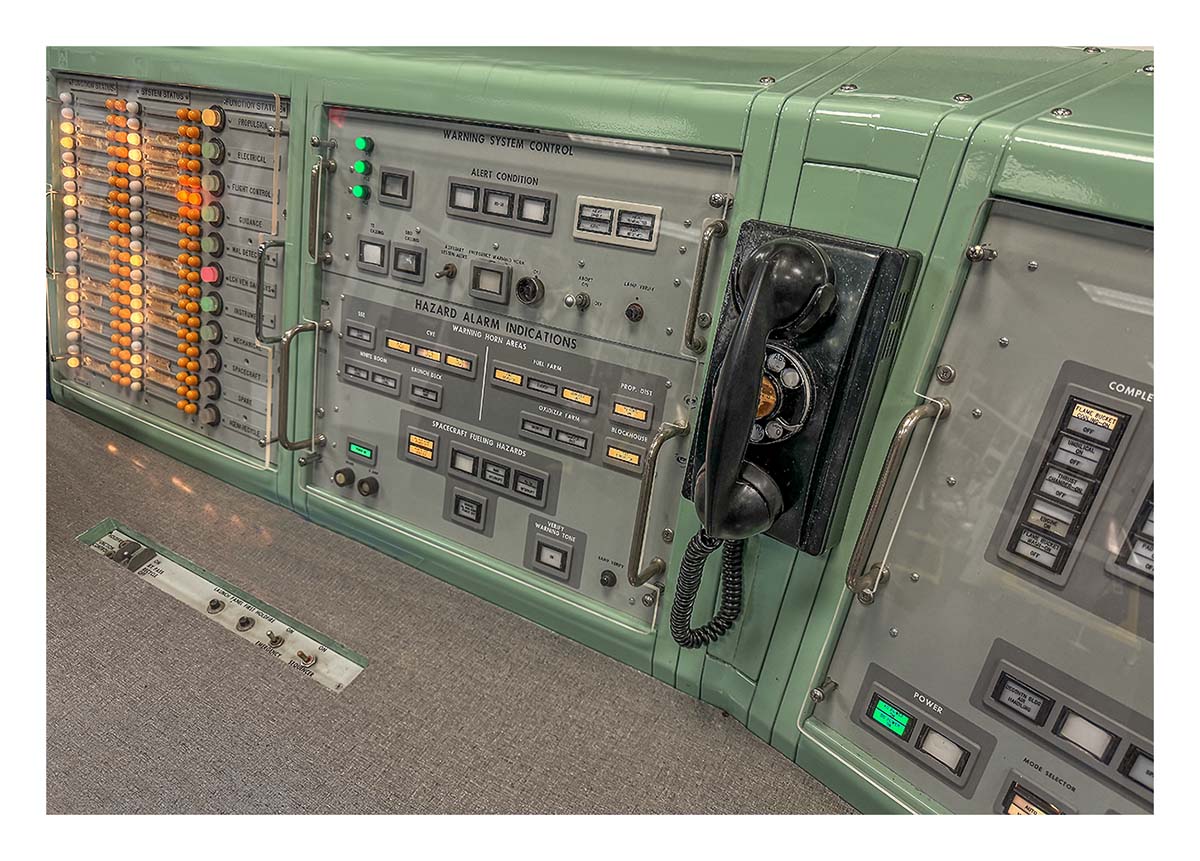
LC19 supported the Titan I and Titan II Gemini launch programs.
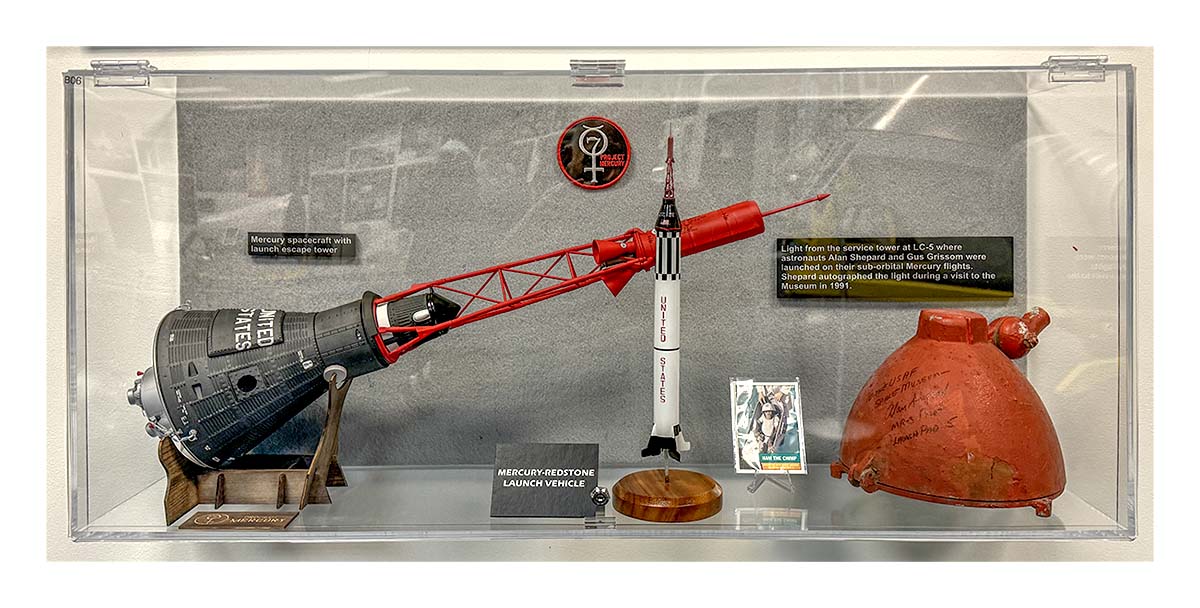
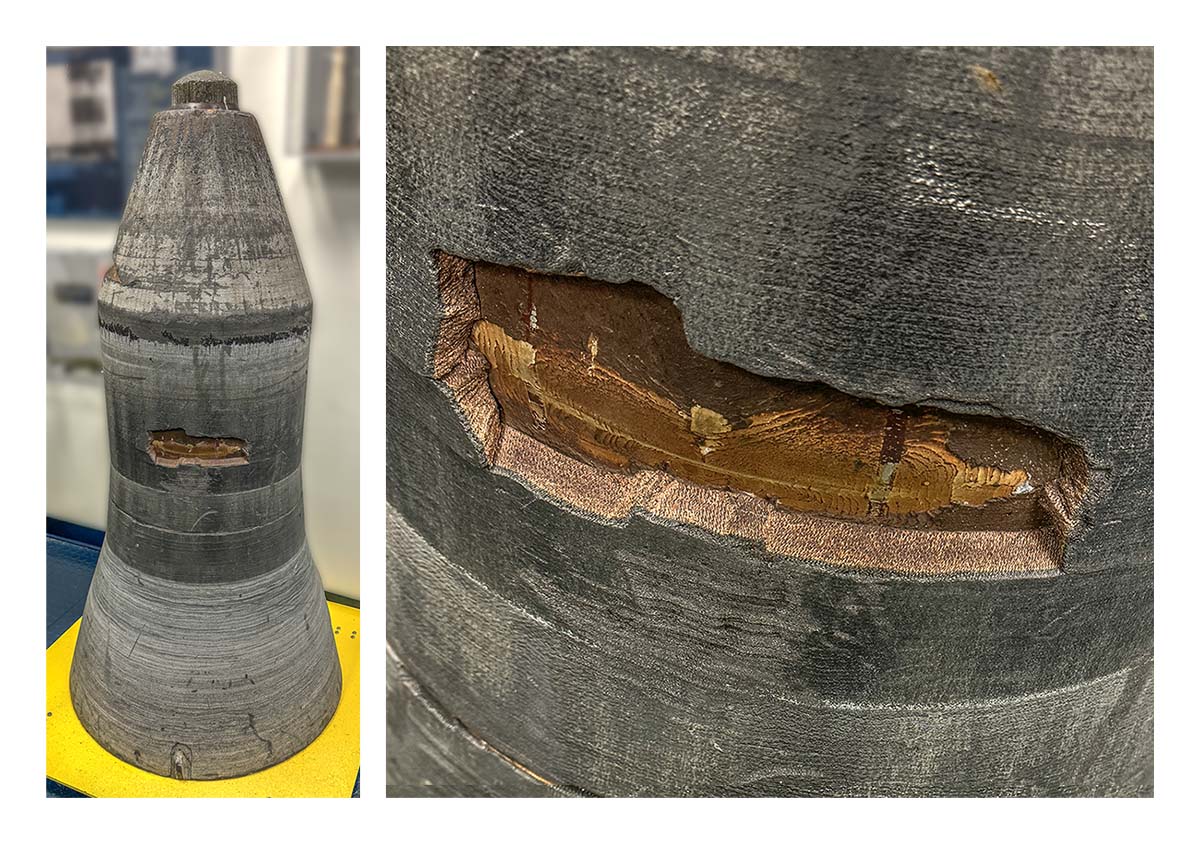
GE/AVCO Mark 5 Reentry Vehicle: As a silo-based ballistic missile and the first solid rocket booster Intercontinental Ballistic Missile (ICBM), the Minuteman 1A series missile, carried the Reentry Vehilce. The missiles were launched from Vandenberg Air Force Base in California, and Cape Canaveral Air Force Station Launch Complexes 31A, 31B and 32B.
CAPE CANAVERAL SPACE FORCE MUSEUM - HANGAR C
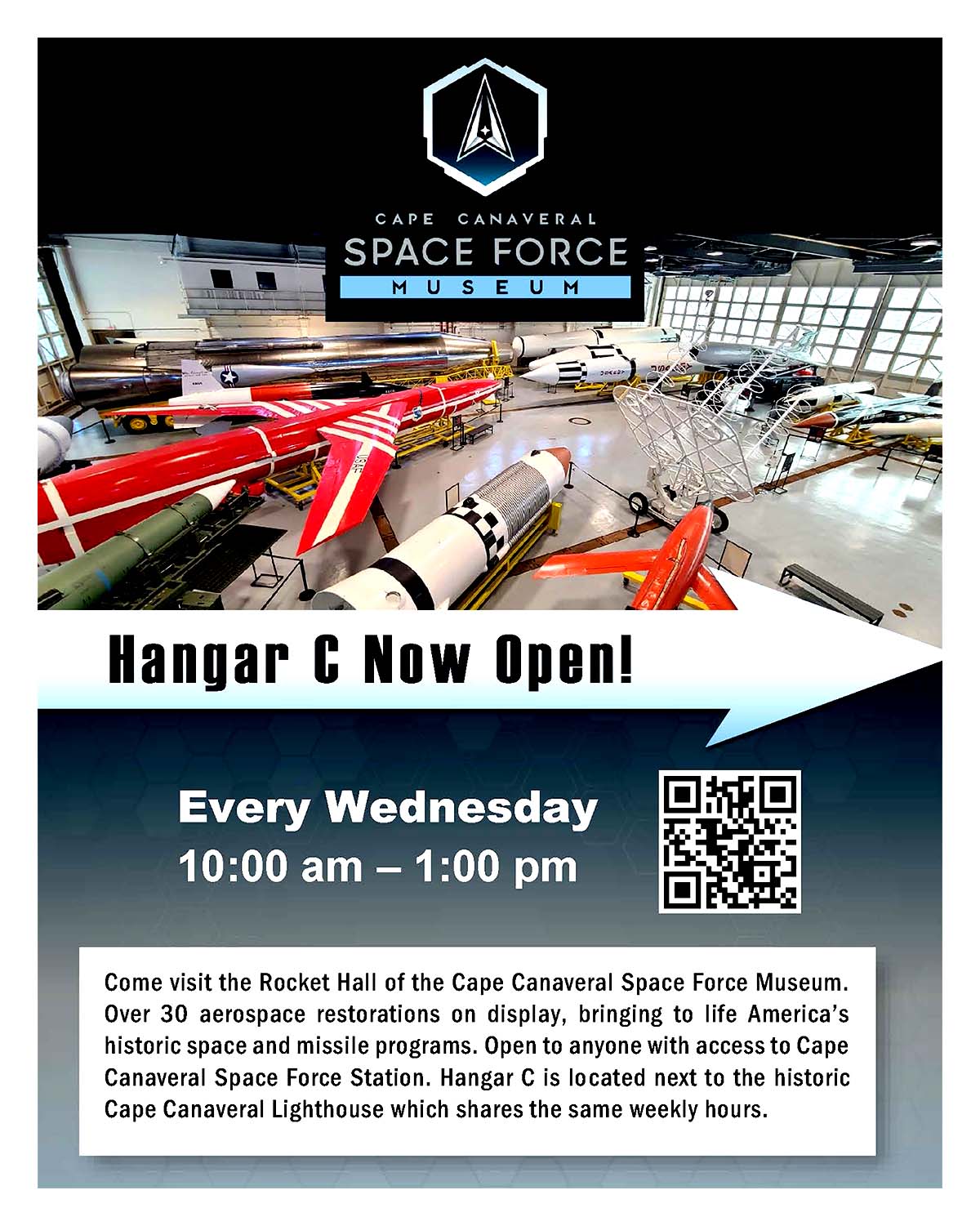
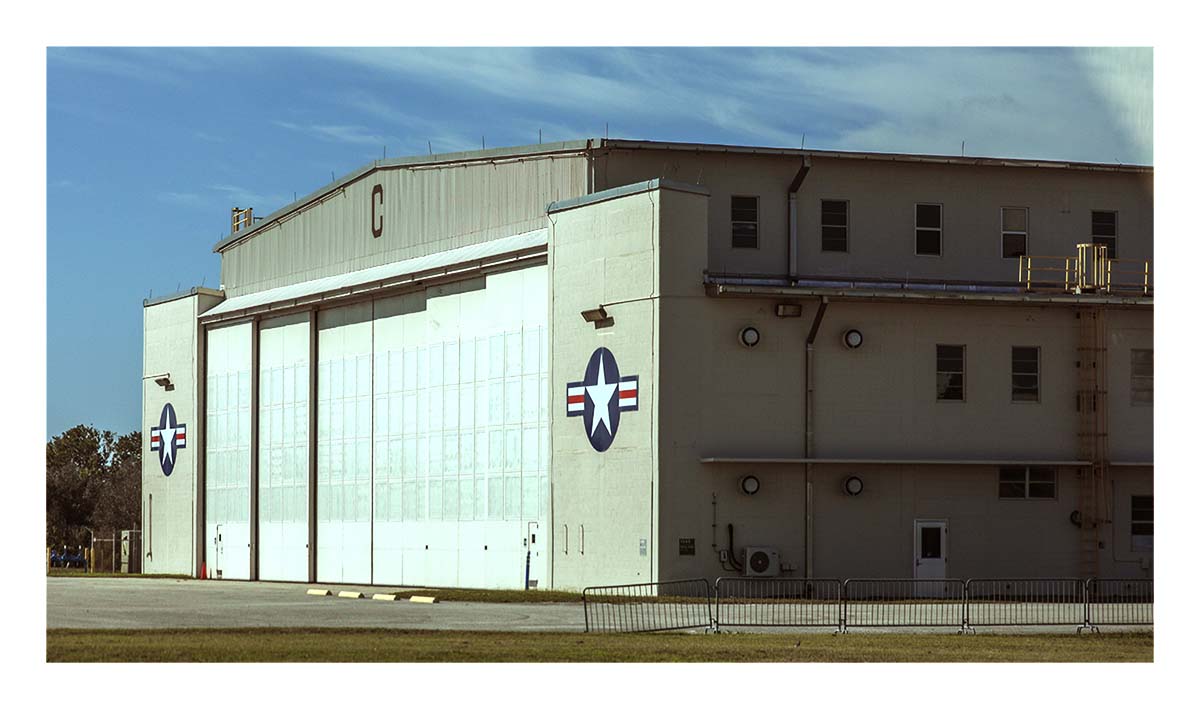
Hangar C: Completed in 1953, the 40,000+ sq ft space was not the only permanent missile assembly building on the Cape between 1953-1956, but stands as the oldest missile assembly building as well. Hangar C's history continues as Wernher von Braun and his Army Ballistic Missile Agency (ABMA) teams were the first to use Hangar C for missile assembly and preparation. Despite his highly controversial life as history will tell, he was undoubtedly one of the most important rocket developers and champions of space exploration in the twentieth century. Mr. von Braun reputedly had an office on the second floor of Hanger C. Today, the huge space houses many huge as well restored hardware from the American Space and Missile Programs conducted over the past decades.
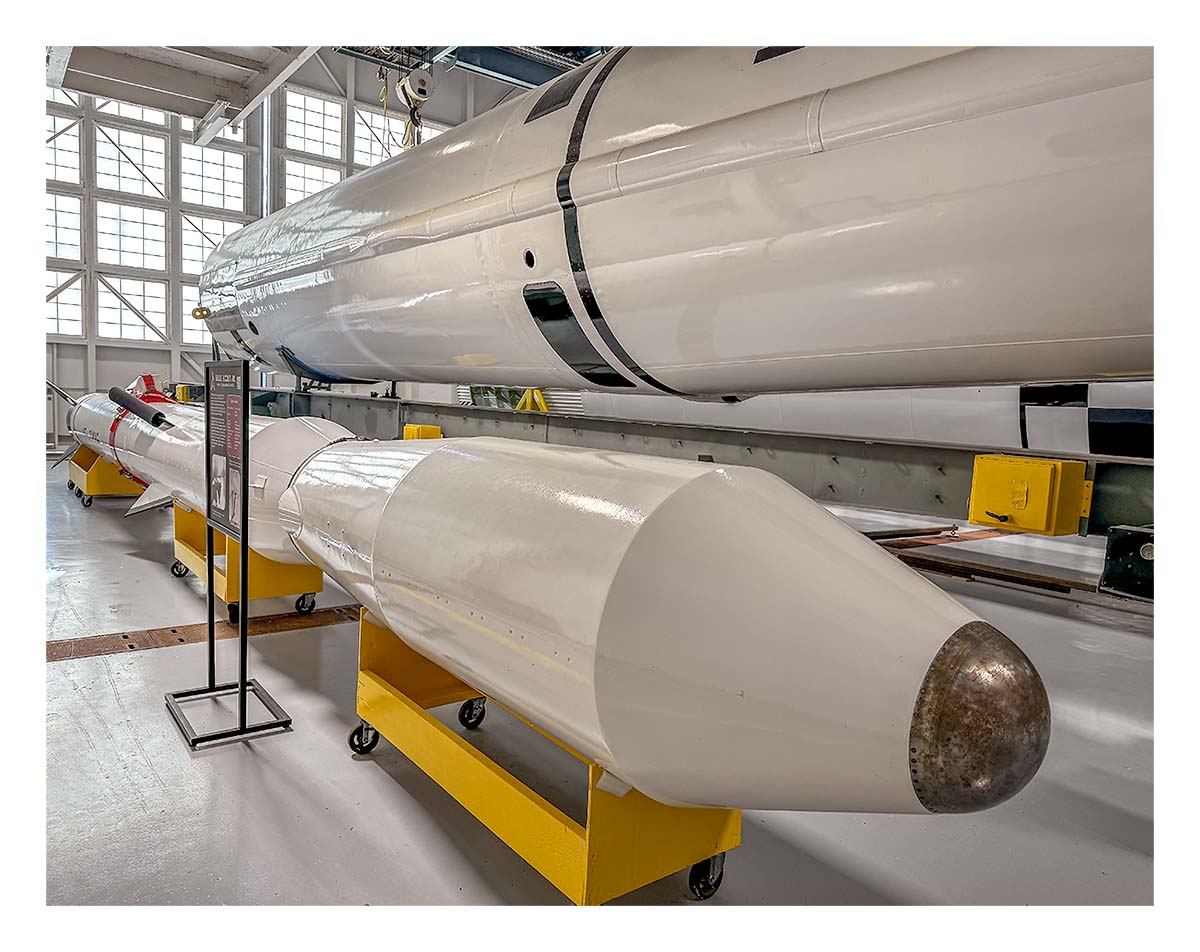
Top: Altas?
Bottom: Ford Aeronautical Division Blue Scout Jr: U.S. Air Force high altitude research vehicle.
Bottom: Ford Aeronautical Division Blue Scout Jr: U.S. Air Force high altitude research vehicle.
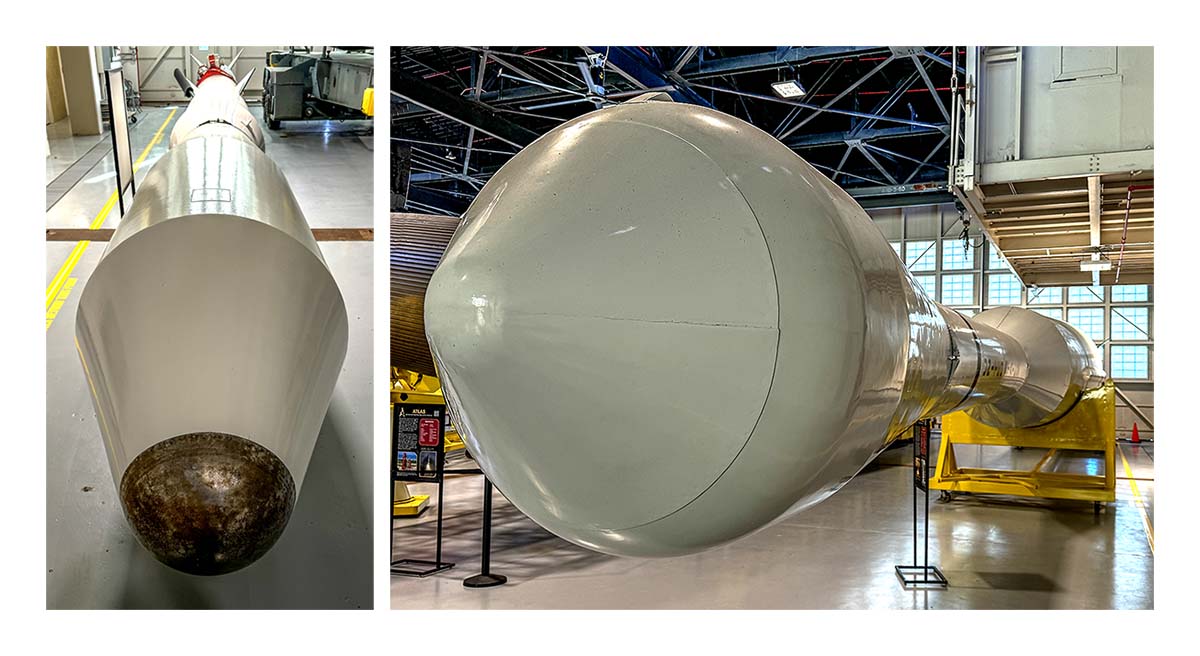
Left: Ford Aeronautical Division Blue Spout Jr.
Right: Douglas Aircraft Thor Able: Space launch vehicle for nose cone experiments, space probes and satellites.
Right: Douglas Aircraft Thor Able: Space launch vehicle for nose cone experiments, space probes and satellites.
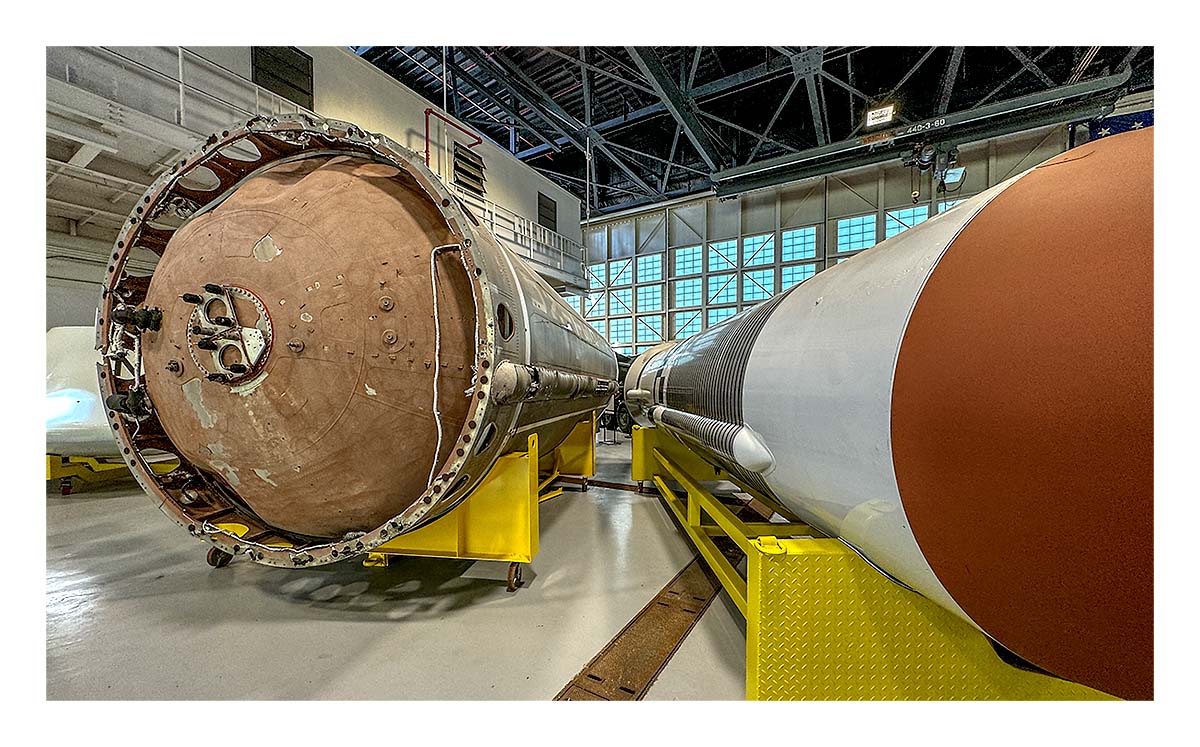
Left: Tital II Segment: First stage booster section of the Titan II that launched Gemini V August 21, 1965 (astronauts, L. Gordon Cooper (USAF) and Charles P. Conrad (USN).
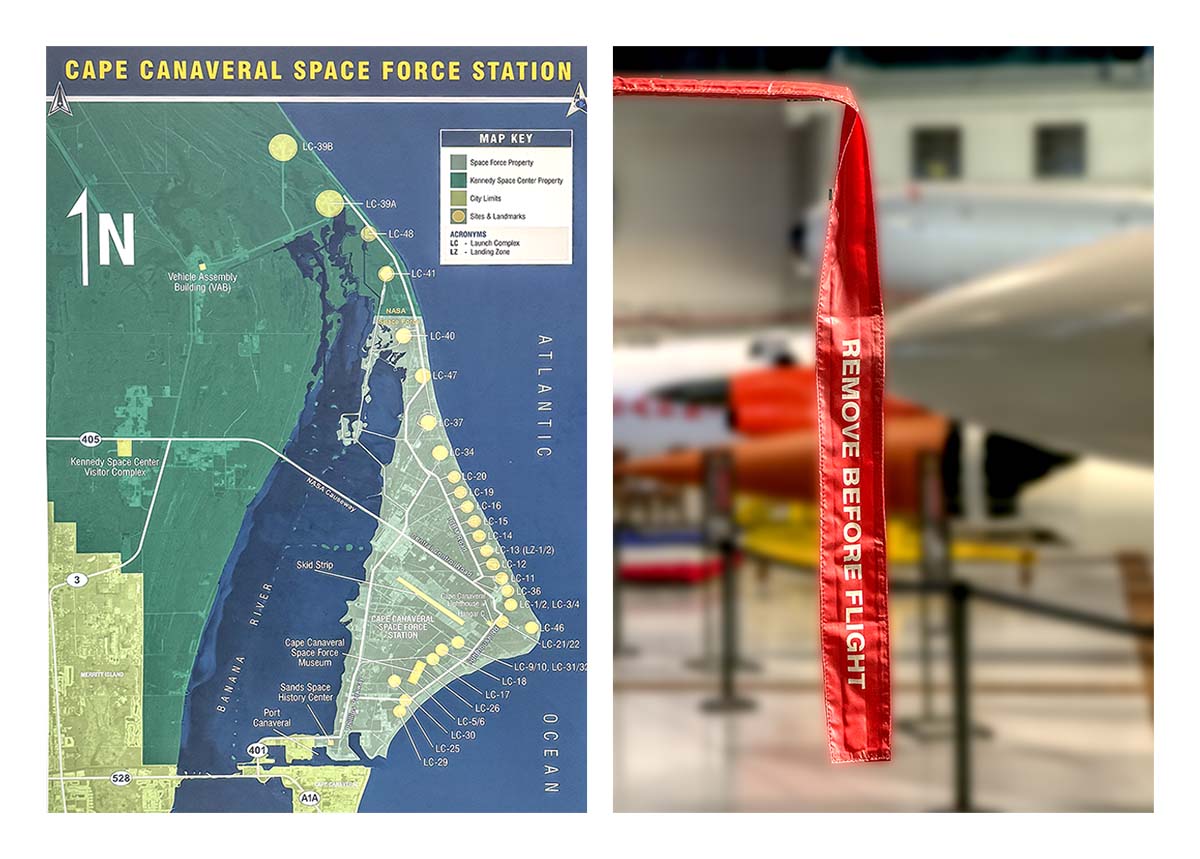
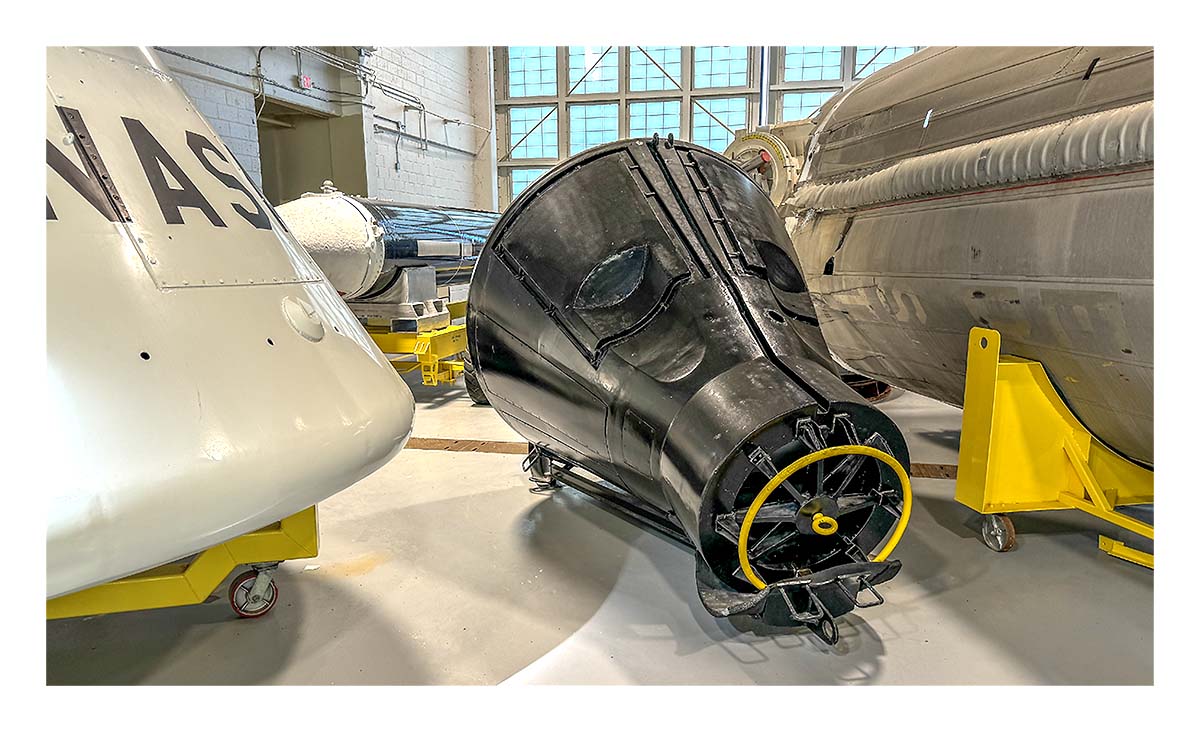
Gemini Boilerplate Capsule: Recovery forces rescue training capsule.
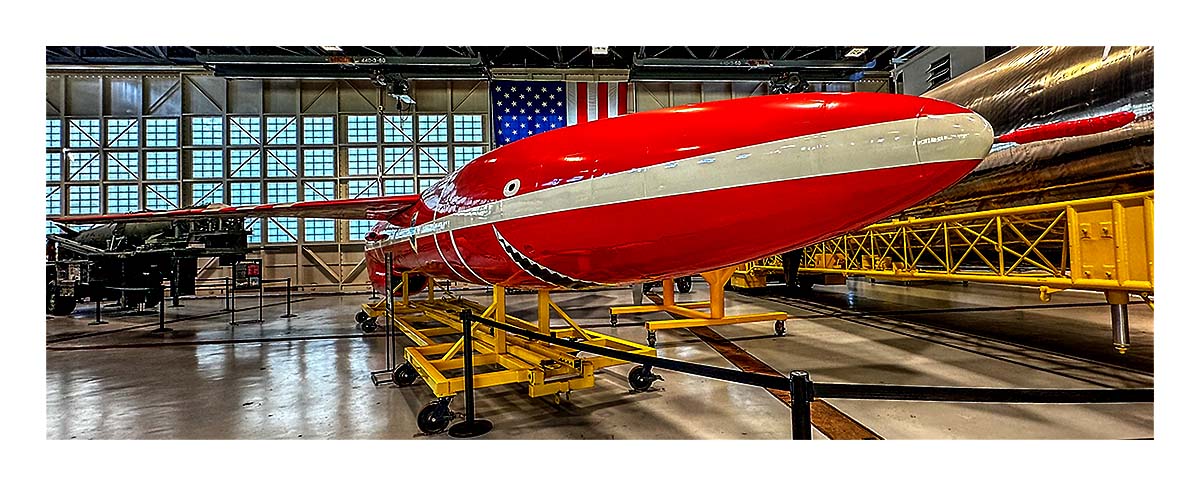
Northrop SM-62 Snark: Intercontinental range ground-launched cruise missile.
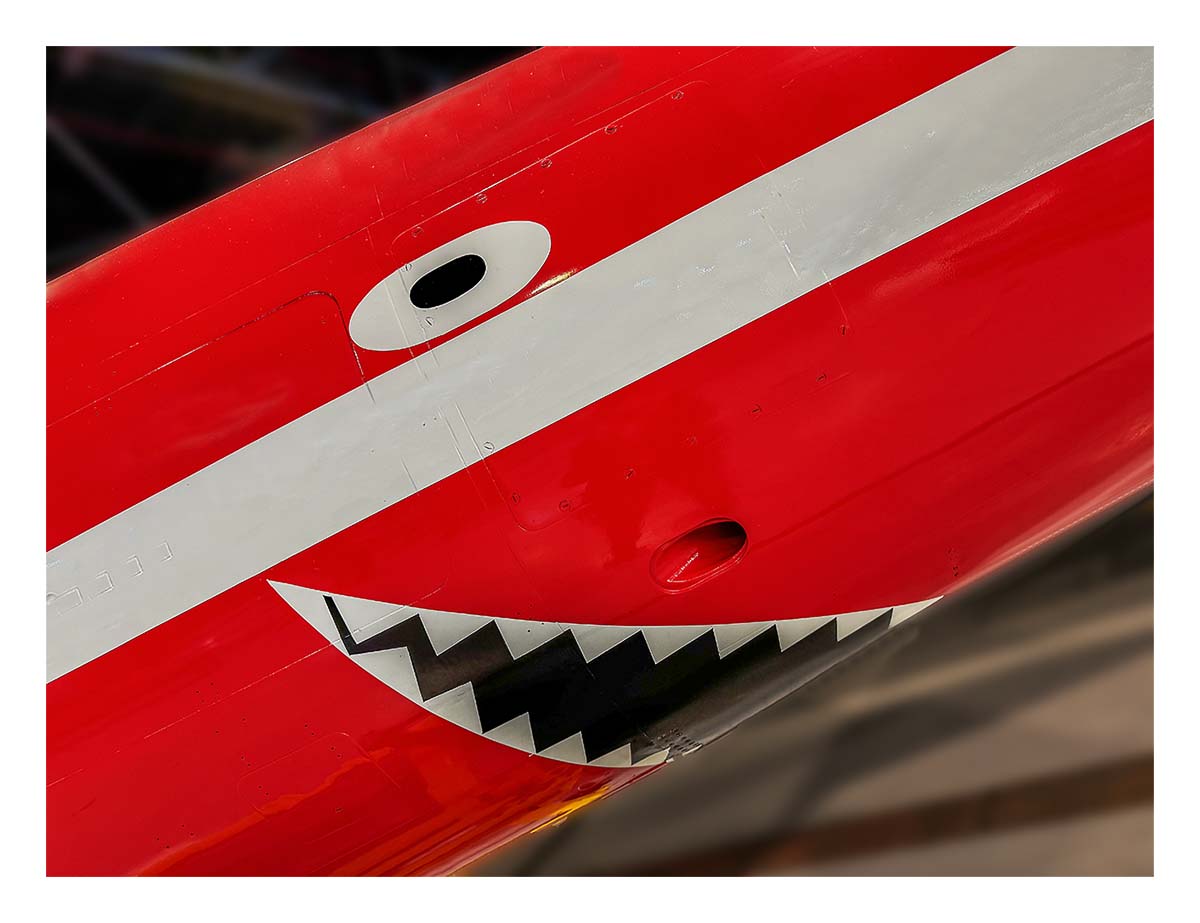
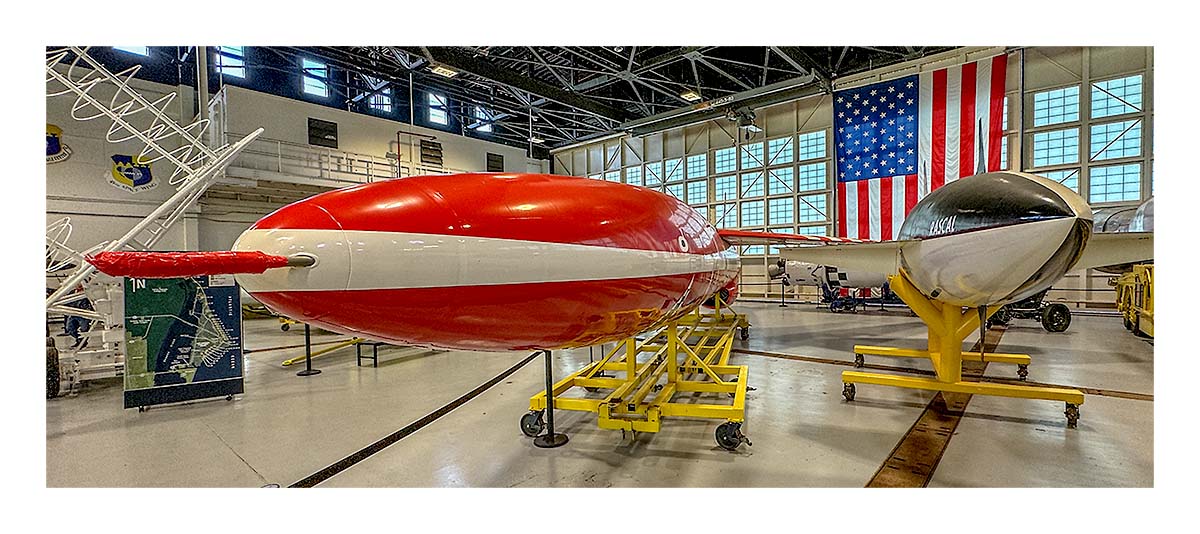
Left: Northrop SM-62 Snark.
Right: Bell Aerosystems Company Pascal GAM-63: Air-to-Ground guided missile.
Right: Bell Aerosystems Company Pascal GAM-63: Air-to-Ground guided missile.
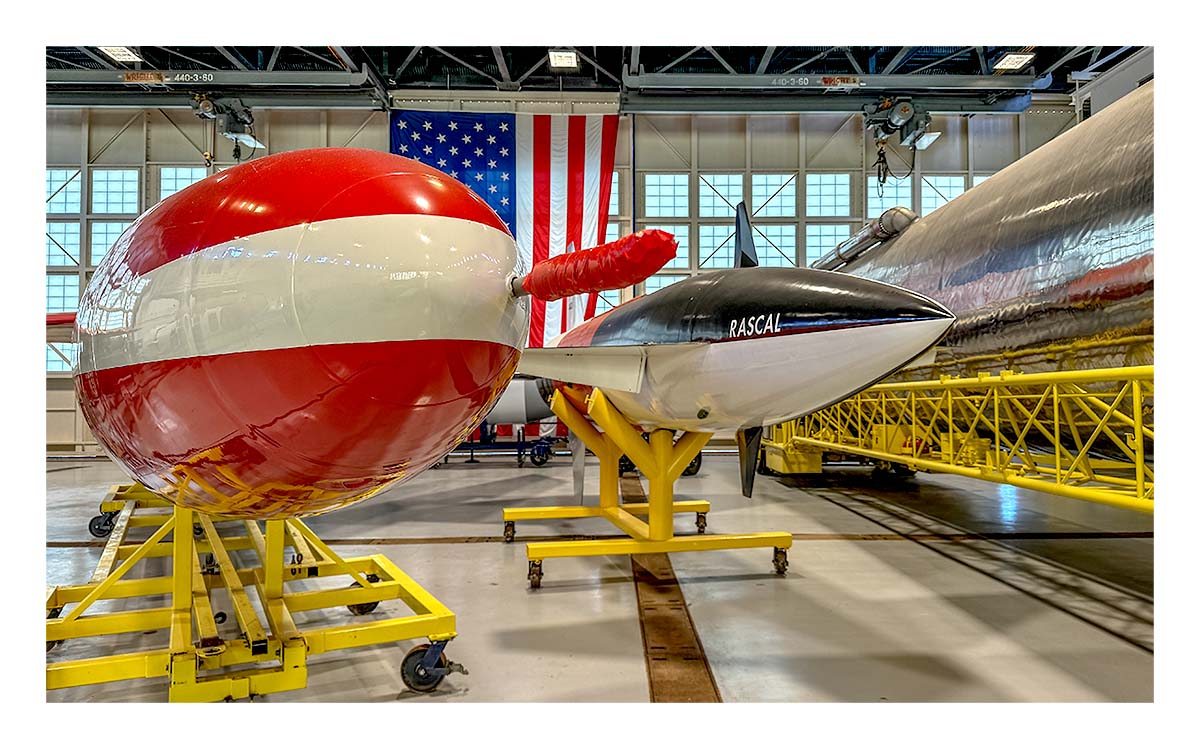
Left: Northrop SM-62 Snark.
Right: Bell Aerosystems Company Pascal GAM-63: Air-to-Ground guided missile.
Right: Bell Aerosystems Company Pascal GAM-63: Air-to-Ground guided missile.
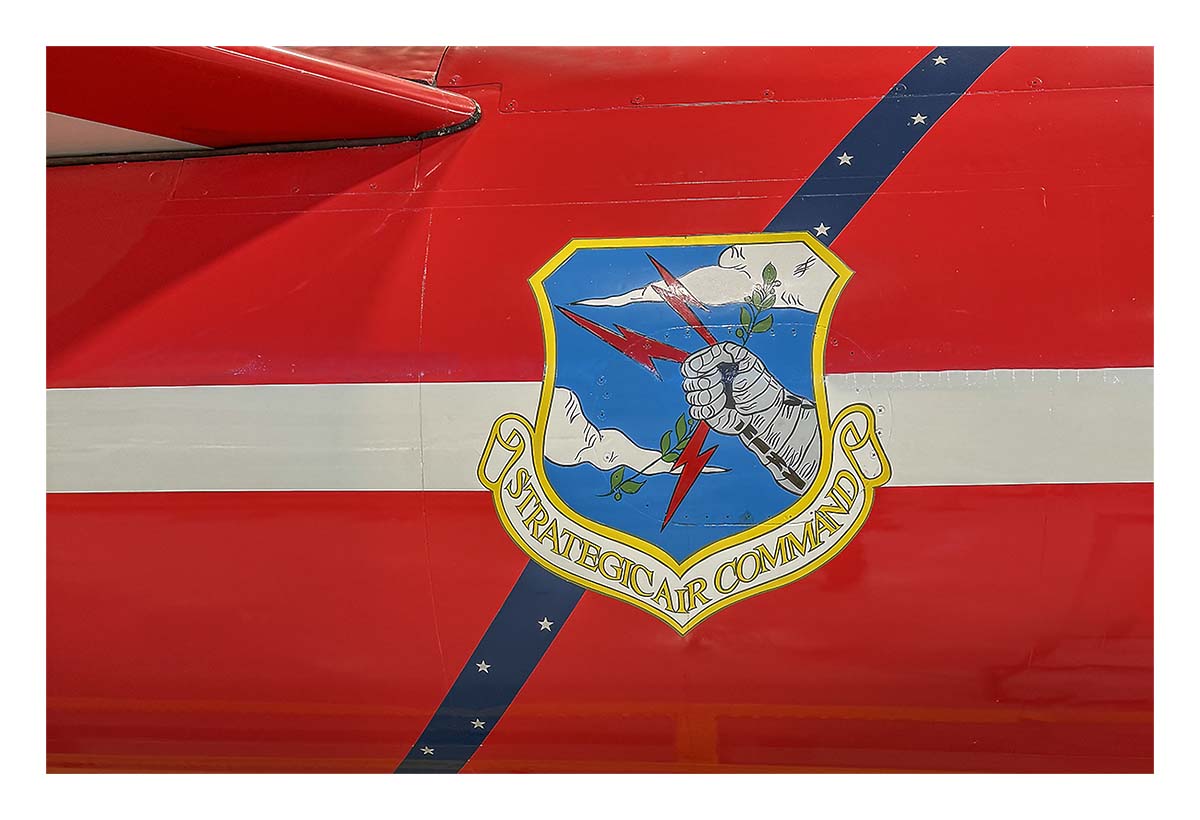
Northrop SM-62 Snark.
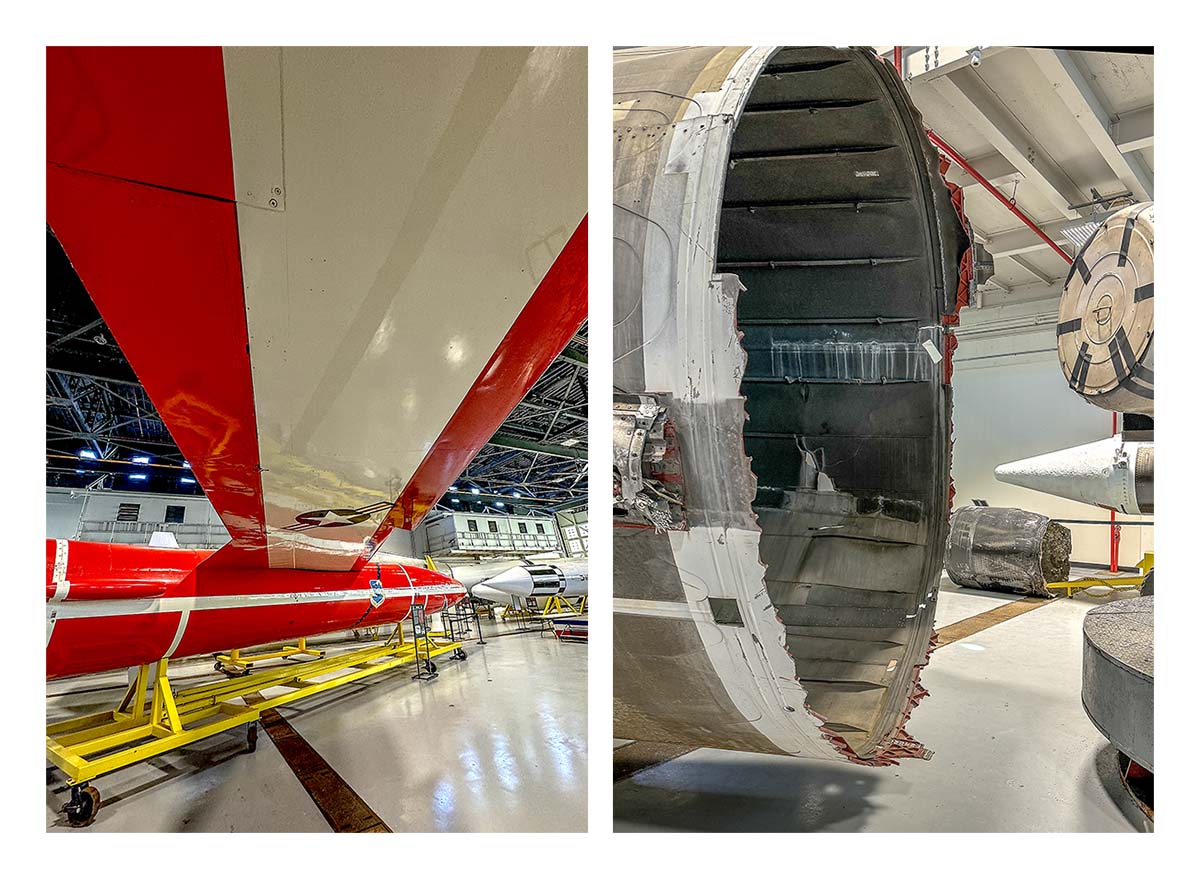
Left: Northrop SM-62 Snark.
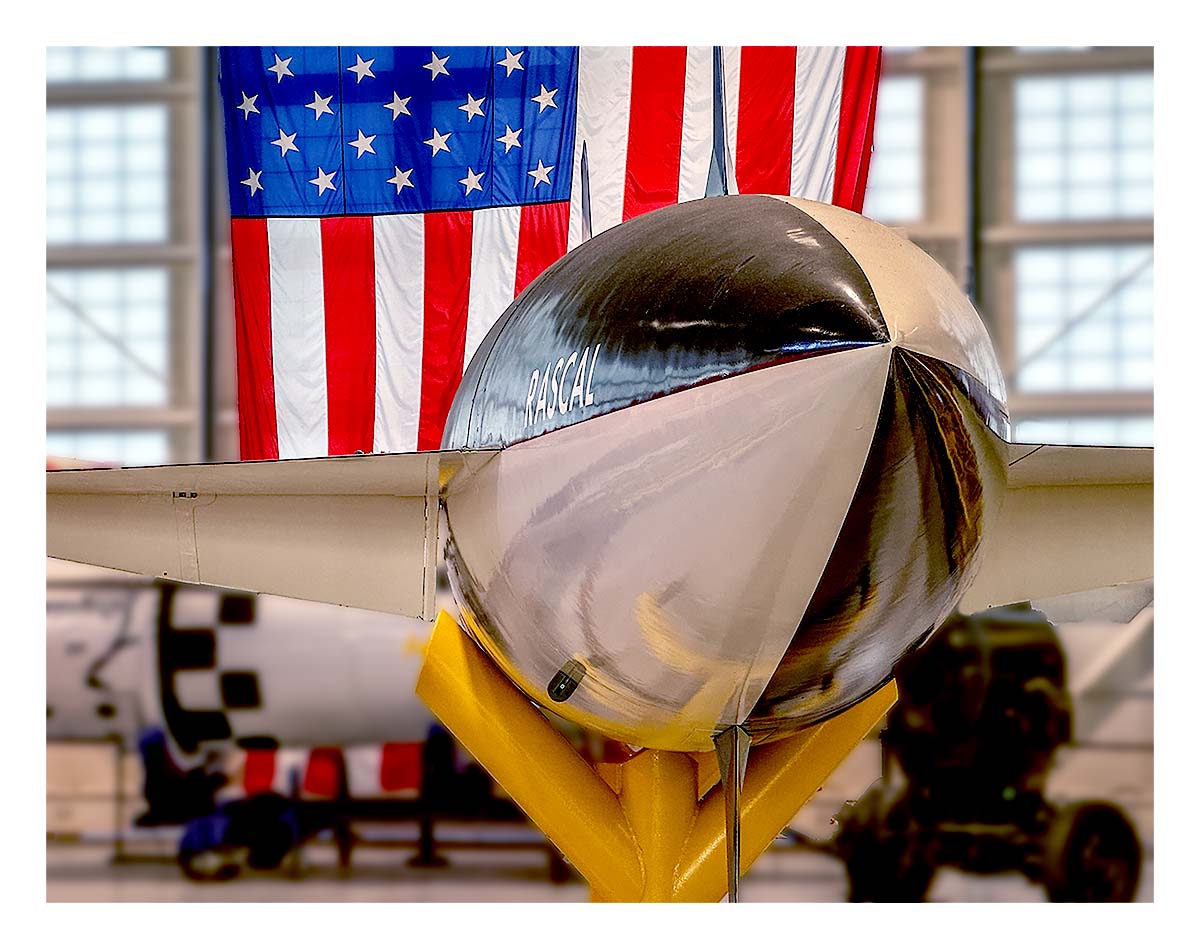
Bell Aerosystems Company Pascal GAM-63: Air-to-Ground guided missile.
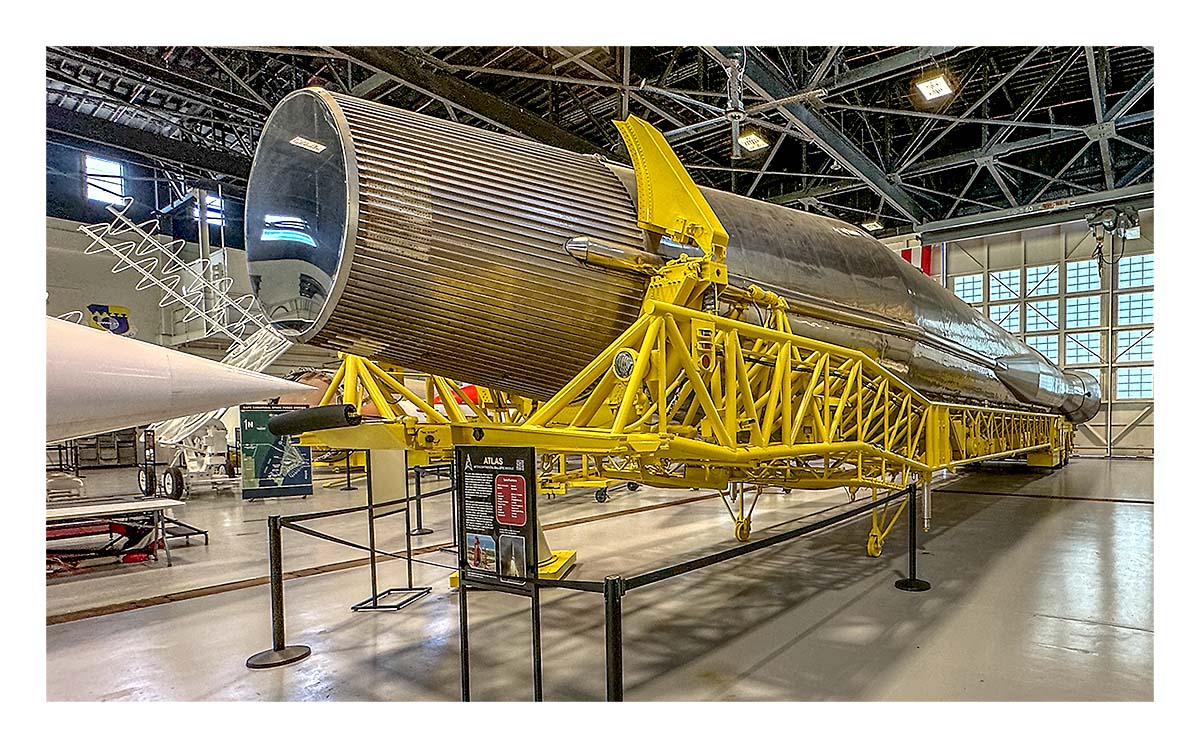
Convair Atlas F and Transporter: Surface-to-Surface guided missile.